The Role of COMPUTATIONAL FLUID DYNAMICS Analysis In Engine Design
IC engines involve complex fluid dynamic interactions between air flow, fuel injection, moving geometries, and combustion. Fluid dynamics phenomena like jet formation, wall impingement with swirl and tumble, and turbulence production are critical for high efficiency engine performance and meeting emissions criteria.
CFD has the potential for providing detailed and useful information and insights that can be fed back into the design process. This is because in CFD analysis, the fundamental equations that describe fluid flow are being solved directly on a mesh that describes the 3D geometry, with sub-models for turbulence, fuel injection, chemistry, and combustion. Several techniques and sub-models are used for modeling moving geometry motion and its effect on fluid flow.
Using CFD results, the flow phenomena can be visualized on 3D geometry and analyzed numerically, providing tremendous insight into the complex interactions that occur inside the engine. Hence CFD analysis is used extensively as part of the design process in automotive engineering, power generation, and transportation. With the rise of modern and inexpensive computing power and 3D CAD systems, it has become much easier for analysts to perform CFD analysis. In increasing order of complexity, the CFD analyses performed can be classified into:
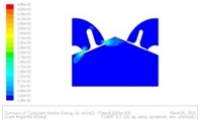
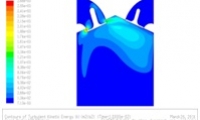
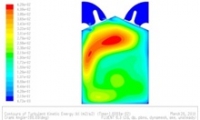
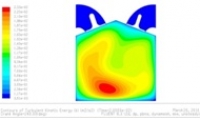
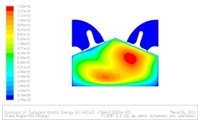
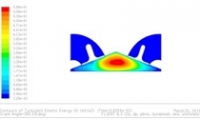
Contours of Turbulence for different crank angles in CFD
• Port Flow Analysis: Quantification of flow rate, swirl and tumble, with static engine geometry at different locations during the engine cycle.
• Cold Flow Analysis: Engine cycle with moving geometry, air flow, and no fuel injection or reactions.
• In-Cylinder Combustion Simulation: Power and exhaust strokes with fuel injection, ignition, reactions, and pollutant prediction on moving geometry.
• Full Cycle Simulation: Simulation of the entire engine cycle with air flow, fuel injection, combustion, and reactions.
